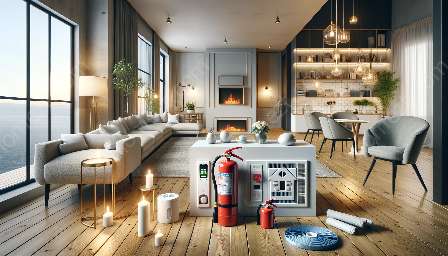Emergencies can strike at any time, making it crucial for individuals to take proactive measures to protect themselves and their homes. By focusing on emergency preparedness in the context of safety and security, and integrating home improvement initiatives, you can create a resilient living environment. This comprehensive guide covers the key aspects of emergency preparedness, safety, security, and home improvement, providing practical advice and actionable steps to help you fortify your home and protect your loved ones.
The Importance of Emergency Preparedness
Emergency preparedness is the foundation of any safety and security plan. It involves developing strategies and acquiring resources to minimize the impact of potential disasters such as natural calamities, accidents, or unforeseen events. By being prepared, homeowners can effectively mitigate risks and respond to emergencies swiftly and confidently.
Types of Emergencies
Emergencies can come in various forms, including:
- Natural disasters: Such as floods, earthquakes, hurricanes, and wildfires.
- Home-related incidents: Such as fires, gas leaks, and structural damage.
- Health emergencies: Including medical emergencies, pandemics, and accidents.
Emergency Preparedness Checklist
To ensure comprehensive emergency preparedness, it's essential to create and maintain a detailed checklist. This can cover essential tasks such as:
- Creating an emergency supply kit: Stock up on non-perishable food, water, first-aid supplies, flashlights, batteries, and other necessities.
- Developing a communication plan: Establish a family emergency communication plan, including contact information for relatives, neighbors, and emergency services.
- Securing the home: Implement measures such as reinforcing doors and windows, installing smoke detectors, and learning how to shut off utilities.
- Staying informed: Keep abreast of potential hazards and emergency alerts through reliable sources such as weather forecasts and official government channels.
- Emergency procedures: Familiarize yourself and your family with emergency protocols for different scenarios, including evacuation routes and safety procedures.
Integrating Home Improvement for Enhanced Safety and Security
Home improvement projects can significantly contribute to bolstering safety and security. By strategically enhancing the physical structure and systems within your home, you can better protect it against potential emergencies.
Enhancing Physical Security
Improving the physical security of your home involves:
- Installing high-quality locks and deadbolts on doors and windows.
- Adding security cameras and motion-sensor lighting to deter intruders.
- Securing outdoor structures such as sheds and garages.
Fire Safety Measures
Fire safety is a critical aspect of home security. Implement the following measures to reduce fire risks:
- Installing smoke alarms on every level of the home.
- Regularly inspecting and maintaining heating systems, chimneys, and electrical wiring.
- Establishing a family fire escape plan and conducting regular drills.
Creating a Comprehensive Safety and Security Strategy
By combining emergency preparedness and home improvement efforts, individuals can forge a comprehensive safety and security strategy. This multifaceted approach encompasses:
- Proactive risk assessment: Identify potential safety and security vulnerabilities within and around the home, and take proactive steps to address them.
- Continuous education and training: Stay informed about emergency preparedness best practices and safety guidelines, and impart this knowledge to the entire household.
- Integration of modern technologies: Embrace innovative safety and security solutions such as smart home systems, surveillance cameras, and environmental monitoring devices.
- Community collaboration: Engage with neighbors, local authorities, and community organizations to foster a network of support and mutual assistance during emergencies.
- Regular review and updates: Periodically reassess and update your emergency preparedness and home security plans to adapt to changing circumstances and evolving risks.
Conclusion
Emergency preparedness, safety, security, and home improvement are interconnected aspects of creating a secure and resilient living environment. By embracing a proactive mindset and implementing practical measures, individuals can fortify their homes against potential hazards and thrive in the face of adversity. With a comprehensive safety and security strategy in place, homeowners can find peace of mind knowing that they are prepared to protect their loved ones and their property in the event of an emergency.
















